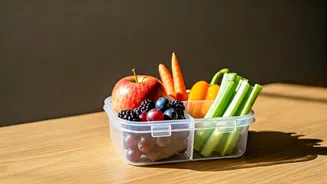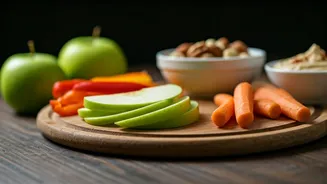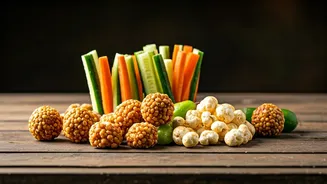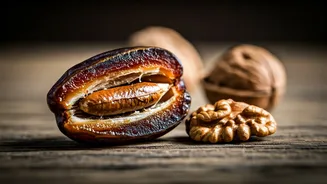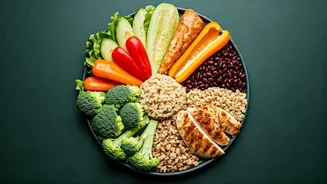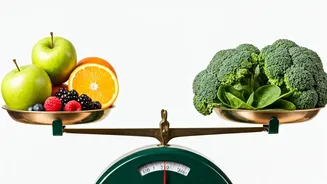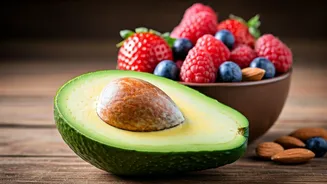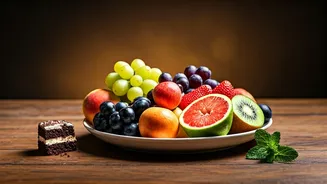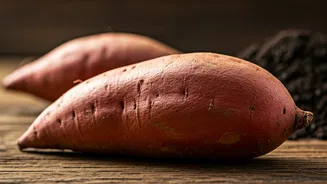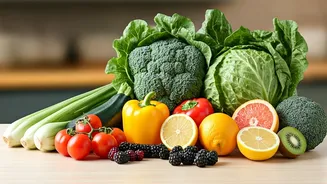Snacking Smartly Defined
Snacking, when done right, is about replenishing energy levels and providing essential nutrients. The key is to choose snacks that contribute to your overall
health and wellness, rather than detract from it. This means prioritizing whole, unprocessed foods over packaged snacks high in sugar, salt, and unhealthy fats. Think of snacking as an opportunity to add more fruits, vegetables, lean proteins, and whole grains to your daily diet. This can help you manage hunger between meals, maintain stable blood sugar levels, and avoid overeating during main meals. It's about being mindful of portion sizes and the nutritional value of what you're consuming. Consider how each snack supports your body's needs. A balanced snack, consisting of a combination of protein, healthy fats, and fiber, is ideal. Such a snack will keep you feeling full and satisfied. This will prevent cravings and make it easier to stick to a healthy eating plan. The objective should be to choose snacks that are both enjoyable and beneficial, making healthy eating a sustainable lifestyle.
Fruits, Veggies, Power
Fruits and vegetables are nutritional powerhouses and perfect for a healthy snack. They offer a wealth of vitamins, minerals, and antioxidants while being naturally low in calories and high in fiber. Options are nearly limitless, ranging from the classic apple slices with peanut butter to more exotic choices like mango chunks or a handful of berries. A cup of mixed berries, for instance, provides a good dose of antioxidants and can satisfy a sweet tooth without added sugars. Another option includes carrot sticks or cucumber slices with hummus. These are easy to prepare and transport, and they provide fiber and hydration. Incorporating vegetables into snacks is easier when you consider dips like guacamole or a light yogurt-based dip. The natural sugars in fruits and vegetables provide a quick energy boost, while the fiber helps to keep you full and satisfied. Fruits and vegetables are also incredibly versatile, making them suitable for any time of the day and for any craving.
Protein for Energy
Protein-rich snacks are essential for maintaining energy levels, supporting muscle health, and keeping you feeling full longer. Protein helps to slow down the digestion process, preventing rapid spikes and crashes in blood sugar levels. Good choices include a handful of almonds, which provide protein, healthy fats, and fiber, or a small portion of Greek yogurt, which is packed with protein and probiotics. Another simple protein-rich option is hard-boiled eggs, which are easy to prepare in advance and take with you. For those who enjoy a bit of flavor, a small serving of cottage cheese combined with some fruit can be a filling and nutritious snack. For those who prefer a savory option, a few slices of turkey or chicken breast offer a quick protein boost. The key is to choose lean protein sources and control portion sizes to keep the snack healthy and balanced. By incorporating protein into your snack routine, you're not only satisfying your hunger but also supporting your overall health and fitness goals.
Whole Grains Benefits
Whole grains offer sustained energy and essential nutrients, making them an excellent choice for a snack. They are rich in fiber, which aids digestion, and can help to stabilize blood sugar levels. Some simple whole-grain snacks include a small portion of oatmeal, which can be prepared in various ways, or a few whole-wheat crackers paired with cheese or avocado. Whole-grain toast with avocado and a sprinkle of salt provides healthy fats, fiber, and sustained energy. Air-popped popcorn, when prepared without excess butter or salt, can also be a nutritious whole-grain snack. Choosing whole-grain options over refined grains is important, as whole grains retain more of their natural nutrients and fiber. Always check the labels when buying whole-grain products to ensure that the first ingredient listed is indeed a whole grain. By incorporating whole grains into your snack routine, you're not only adding valuable nutrients but also contributing to better digestive health and overall well-being.
Snack Box Assembly
Creating a snack box is an efficient way to make healthy eating convenient and enjoyable. It allows you to plan your snacks in advance and avoid impulsive unhealthy choices. Start with a container that is easy to carry and fits your needs. You can use reusable containers with compartments to separate different snacks, or simply pack individual portions. When assembling your snack box, aim for a balanced combination of foods from different food groups. Include a portion of fruits or vegetables, a source of protein, and a healthy fat or a small serving of whole grains. Ideas for snack box components include a handful of trail mix, a piece of fruit like an apple or banana, a small container of yogurt, and some whole-grain crackers. Another option could be carrot sticks and hummus, a hard-boiled egg, and a few almonds. Prepare your snack box at the beginning of the week to stay on track. Ensure your snacks are within easy reach when hunger strikes. With a thoughtfully prepared snack box, you can maintain your energy levels and meet your health goals, making healthy eating a practical part of your daily life.
